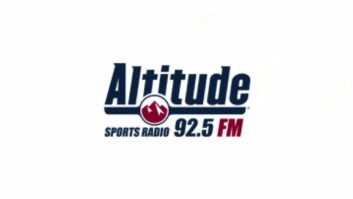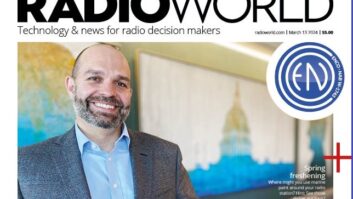First FM in the State to Go Digital Also Is First to Test Nautel HD Radio Transmitter
DENVER KUVO is the first FM broadcaster in Colorado to broadcast HD Radio. We turned on the digital signal Aug. 1. As a stand-alone public radio station with a full-time classic jazz format, KUVO 89.3 FM has always tried to be on the forefront of technology.
In 1999 KUVO was the first radio station in the Denver market with a fully digital plant; so it was a natural for us to be interested in HD Radio. When HD Radio seed market money became available for Denver from the Corporation for Public Broadcasting last year, its parent, Denver Educational Broadcasting Inc., applied for the grant. The $75,000 CPB grant was approved late last year. As chief engineer, I was charged with the conversion.
At the time of our CPB application, my initial plan was to use antenna combining of the analog and digital signals with our new antenna at our new tower site. KUVO, along with KRMA Rocky Mountain Public television and KVOD(FM) Colorado Public Radio, have been working on building a new transmission site for the last five years on Mt. Morrison. Our existing site, built in the early 1950s on Lookout Mountain, is a “non-conforming user”; the zoning prevents us from making any modifications to the tower or antenna.
Additionally, construction delays at the Mt. Morrison site of more than 18 months caused us to consider high-level combining with our current antenna/tower site to get us on the air with HD Radio before the CPB grant ran out.
As a result, I needed to look at either high-level or low-level combining. Adding to the potential issues of high-level combining, we are diplexed into an eight-bay Shively 6810 BR with a Kathrein combiner only 800 kHz away from KVOD’s 90.1 MHz signal.
Best implementation scenario
I attended the National Public Radio Public Radio Engineering Conference preceding the NAB this year and there was a fair amount of discussion regarding the problems of both antenna and high-level combining, including spectral regrowth problems and transmitter isolation issues.
Spectral regrowth can happen when HD Radio “sidebands” mix with the primary carrier frequency and create spurious signals on second, third and fourth adjacent channels. The transmitter isolation issue involves the need to keep the analog FM signal out of the HD Radio transmitter where it can create spectral re-growth problems.
(click thumbnail)
Isolators can be used to increase the isolation to the HD Radio transmitter, but the initial estimates on the amount of isolation required to prevent spectral regrowth appeared to be off by an order of 10 dB or so. Additionally, finding an isolator with sufficient power handling and isolation in the time frame we needed was questionable.
As a result of the PREC information, I tossed out our initial plan for antenna combining and rethought how best to implement HD Radio. At the NAB, I met with vendors and discussed our options and looked at equipment.
I decided that our best approach was to go with low-level combining. I was concerned about the issue of spectral regrowth and low-level looked like it might offer the best solution to this problem. The Denver FM market is congested, and the last thing I wanted to worry about was interference to other broadcasters.
We are on the air with a Nautel FM-10 analog transmitter and it has logged more than 40,000 hours of run time since we purchased it. In that time, we have had only 3 hours of unscheduled downtime.
With that kind of reliability it only made sense for us to take a look at the Nautel HD Radio solution. At the NAB, Nautel was showing its new M-50 HD Radio-capable adaptive pre-distortion exciter along with the Nautel V-10 HD Radio-compatible transmitter. Looking at the spectrum analyzer plots from the M-50/V-10 combination showed that spectral re-growth was virtually eliminated with Nautel’s DSP adaptive pre-distortion system.
As a result of seeing the Nautel demo at the NAB Show I ordered the Nautel V-10 hybrid transmitter with the Nautel M-50 adaptive preconditioning exciters. Our 6.2 kW TXPO needed to generate our 22,500 ERP was within the 7.7 kW HD Radio capability of the V-10 and we agreed to be a beta site for the first unit shipped.
Nautel committed to delivering the V-10 on July 23 and we scheduled installation to start on the 24th.
During the wait for the Nautel we went ahead and prepped the site for the transmitter. Our existing STL was composite-based and we needed to have an AES/EBU 44.1 kHz/16 bit/20 kHz-capable STL.
We also needed Ethernet to the site for program-associated data. Based upon these requirement I ordered two sets (four frames) of Harris Intraplex, which were configured with two sets of 44.1/16 uncompressed AES/EBU digital audio – the second audio channel is for a Tomorrow Radio secondary audio channel which we will implement as soon as it becomes available – four RS-232 lines, two POTS telephone circuits and 512 kilobits per second of Ethernet capability.
Listening tests used
The Intraplex frames output E-1 (32 time slices at 64 kbps, eight more than T-1), which goes into our E-1 x 2 microwave radios for transmission to our site on Lookout Mountain. We used our Terra Sonde Digital Audio Toolbox watchdog feature to monitor the STL system long-term and check for errors on the AES/EBU digital audio channels.
We needed a 20 kHz processor and we auditioned both of the major HD Radio processors. As a result of our listening tests we purchased an Omnia 6 EX HD.
Prior to its installation we had dialed in the processing and created the dayparts for all of our specialty shows. The Omnia 6 is a powerful processor and it has a huge number of adjustment s. To speed up my learning curve, I made several calls to Omnia support to help me tweak the 6 EX HD and the results were most satisfying.
We also installed a Dielectric 3 1/8-inch coax switch to let us rapidly switch between our FM-10 and the V-10 and we purchased all of the electrical parts needed to supply the 208 three-phase power to the V-10. As part of the electrical work we ordered 100 foot of 4-inch wide copper strap to provide grounding and lightning protection. By the time we got all of the grounding installed we had only a foot of it left over.
All of our planning paid off, as it only took 16 hours from the time the transmitter was moved into the building to initial power up. On July 28 the engineering crew from Nautel arrived to commission the V-10. Mike Woods, FM project leader, and Chris Mahaney, research technologist, arrived and started the final commissioning the V-10.
While Mike and Chris worked on the V-10, the KUVO engineering staff of Justin Peacock, Joey Kloss and John Mikity finished assembling and wiring the support rack which included installing the Harris Intraplex frames, microwave radios, the Omnia, Ethernet hub, MGE UPS, Nautel coax switch controller and the Sine Systems RFC remote control.
We started on-air testing late on the 29th and found that using our old modulation monitor to set the modulation levels on the FM side was problematic when the HD Radio carriers were on. With no modulation present, no sub carriers, the stereo pilot on and the HD Radio carriers on, our analog FM modulation monitor was indicating 20 percent to 25 percent modulation.
It would appear that in this day and age of HD Radio, our old analog FM modulation monitor’s time has passed. We ended up setting the analog FM modulation level on the M-50 exciters by turning off the HD Radio carriers.
Nautel arranged to have David Maxson of Broadcast Signal Labs in Boston arrive on the 29th to document the performance of the Nautel adaptive pre-distortion system on the M-50 exciter. He was able to confirm that the V-10/M-50 combination met all FCC occupied bandwidth requirements with margin to spare and was not creating any spectral re-growth problems.
Performance documentation
We also had our regular measurement engineer, Howard Eldridge of Frequency Measurement Co., perform a full set of measurements from our air signal. His results confirmed Maxson’s measurements.
The other interesting result besides occupied bandwidth was the frequency measurement. The M-50 exciters receive a 10 MHz reference clock from the GPS receiver and the FM carrier frequency error was less than 0.5 Hz!
We did several sets of A-B listening tests switching between our Nautel FM-10 with its old STL, a Moseley PCL-606, and processing and the V-10 with the new STL and air chain. The analog FM side of the V-10 made the best FM audio I have ever heard.
The Omnia 6 EX HD has an open and clean sound that makes us really stand out on the dial and yet it sounds unprocessed. Additionally, it has more apparent high-end than our old chain (which was no slouch, either).
Once we commenced with full-time Nautel M-50/V-10 HD Radio operation on July 30, I have received numerous calls from our listeners commenting on how much better KUVO’s analog FM signal sounded after the change. Additionally, the V-10 has been rock solid and we haven’t had a single glitch with it since it went on the air.
The total cost of the HD Radio conversion was in the range of $130,000, with the CPB grant covering $75,000 of it. This was more than I initially budgeted; the cost increase resulted from the change from antenna combining to low-level combining.
We did a fair amount of listening to the HD Radio signal using the Ibiquity HD Radio reference receiver to set the levels between the analog FM side and HD Radio. We also used it to set the delay time on the M-50 exciter of the AES/EBU digital input for the analog FM signal.
We found we needed eight seconds of delay on the analog side to match the HD Radio digital signal. This delay didn’t present any issues for our on-air staff, as we haven’t monitored off-air since the installation of our digital plant in 1999.
A pair of Broadcast Tools Silence Monitors (one at the studio and one at the transmitter site) alert engineering via the Sine Systems remote and the studio using BetaBrite electronic text displays in the plant. We put both Nautel M-50 exciters on the MGE UPS as we get frequent power hits at the site and keeping the exciters up saves having to wait eight additional seconds for the delay to fill to restore audio.
We did a demo of HD Radio for the KUVO staff on Aug. 3 using the Ibiquity-supplied HD Radio reference receiver. We purposely set the antenna in an area with known multipath issues in our performance studio.
We started the demo in the analog mode and the multipath artifacts were quite audible. These artifacts included the typical “tearing” sound and noise modulation that one has with multipath. We then switched to digital HD Radio and the improvement was immediately noticeable to everyone there.
The quality of the HD Radio audio is quite good. We do notice some artifacts on source material that has been previously MPEG encoded, such as NPR news feeds and the ATRAC-encoded audio from our MiniDisc machines, being passed through the HD Radio system. With locally generated, non-MPEG encoded source material this isn’t an issue.
We have installed a Neural Audio/Harris NeuStar codec pre-conditioner to pre-condition the HD Radio signal after the Omnia, and our listening tests indicate that it reduces the HD Radio codec artifacts significantly. Normally, the NeuStar operates with a direct connection to the Harris Dexstar HD Radio exciter and the units become interactive.
Specially-modified NeuStar
KUVO received a beta experimental NeuStar with some modifications so that it could operate without the Dexstar exciter. This was a special unit, sent to us for some audio listening tests and experiments because the normal “commercial” settings, which the units employ for the bulk of the broadcast community, are not typically suitable for public radio. As a result of these tests, new presets designed for the needs of public radio are being developed and we like the results.
I looked at how we were going to implement program-associated data support for HD Radio and RDS for our conventional FM analog service. I selected The Radio Experience to format and generate our PAD and RDS data using a PC at the studio and shipping it via the Ethernet capability of the Intraplex to the Nautel NE IBOC exciter and the M-50 exciter.
Our next issue was the most challenging to solve. As the first FM broadcaster on the air with HD Radio in Colorado we needed to educate our listeners, inform the public in general and develop a relationship with a local retailer who could supply HD Radios for purchase. Since at this time the bulk of HD Radios available at walk-in stores are car units we needed to find a retailer that had a major presence in the auto sound marketplace and carried HD Radios. We did some homework on local retailers and contacted Ibiquity who gave us a referral at Ultimate Electronics SoundTrack.
We set up a meeting with the promotions staff and car audio sales manager at Ultimate and proposed a program of underwriting announcements, in-store remotes and a live broadcast of the Colorado Symphony with three-time Grammy winner Dianne Reeves. We also proposed a joint press release event with them including HD Radio demos and live drive sessions to show the elimination of multipath.
The folks at Ultimate Electronics had been waiting for an FM broadcaster to go on the air with HD Radio and were primed to help us launch the service. As a result of our proposals they will be participating in our press launch, Dianne Reeves-Colorado Symphony Broadcast and in store remotes. This rollout was slated to begin in late September and we expect that this plan will significantly increase the exposure of HD Radio to the public and drive demand for HD Radio.
On Aug. 16 we started promoting HD Radio on the air using tag lines coming out of the top-of-the-hour news from NPR. The tag line is “Colorado’s first FM HD Radio station.” There is a 40-second announcement during one of the three mini-breaks per hour. The breaks also occur in programming from PRI, MPR and the Jazz Satellite Network. The 40-second announcements give a brief overview of HD Radio and direct listeners to the KUVO Web site, where there is additional information on HD Radio.
Management’s role
Being at the forefront of HD Radio takes a major commitment from management. My boss, KUVO Program Director Carlos Lando, and our General Manager and Chief Executive Officer Florence Hernandez-Ramos have supported our HD Radio conversion program from day one.
KUVO’s HD Radio conversion has been a major learning process for me. At the start of the project, I read everything that I could get my hands on and talked to vendors and other CEs who had put HD Radio on the air.
I found the PREC to be invaluable and the information that was disseminated prevented me from making a bad choice. Our vendors provided outstanding pre-sales consultation, after-sale technical support; most important, they delivered on schedule.
I have been in the broadcasting business for a long time. HD Radio is the most exciting advancement in FM since the advent of stereo. With Tomorrow Radio and 5.1 surround, the future looks very promising for HD Radio and those broadcasters who fully embrace it.












